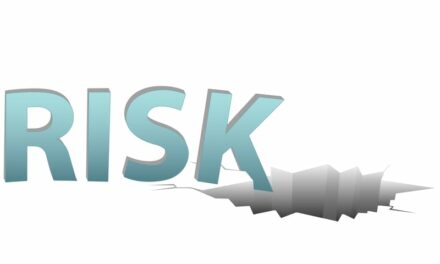Floor-rise strategies that overcome obstacles to providing this training so important for older adults.
by John V. Rider, MS, OTR/L, MSCS, CEAS, Alyssa Sowerwine, and Monica Tay
Falls are the leading cause of injury-related deaths among individuals aged 65 years and older, and the rate of deaths from falls is steadily increasing as the aging population continues to grow.1 One shared goal among rehabilitation professionals working with older adults is reducing fall risk. In addition to reducing fall risk and preventing injury, rehabilitation professionals also prepare individuals to cope if they have a fall. The ability to rise from the floor is a skill learned early in life and is necessary for involvement in various functional activities. Unfortunately, getting up from the floor becomes more challenging later in life.
Besides typical age-related changes, individuals may not have opportunities to practice this task or learn safe strategies for coping after a fall. The inability to rise or recover from the floor after a fall has been identified as a major contributing factor to medical complications in older adults who have fallen.2,3 Moreover, up to 20% of individuals who fall remain on the floor for more than 1 hour, which can be due to physical injuries or a lack of knowledge regarding how to get up safely and effectively.4 This period of inactivity while lying on the floor can lead to dehydration, muscle injury, and pressure sores, making it more difficult for the individual to rise.2
These complications and the resultant extended recovery time may contribute to further physical deconditioning and fear of falling avoidance behavior, putting individuals at a greater risk of falling. Fortunately, floor-rise training has been shown to decrease fear of falling avoidance behavior and increase strength and the ability to get up from the floor after a fall.5
Despite the benefits of floor-rise training, evidence suggests that this is not a standard of care within occupational and physical therapy practice.2 Occupational and physical therapists tend to provide more floor-rise training in hospital settings than in community-based settings, indicating that older adults living in the community rarely receive floor-rise training in their natural environment.6 Evidence suggests the reasons for limited provision of floor-rise training include inadequate clinician training, low confidence and competence of the clinician, as well as a need for a backup plan should things go wrong.6 This article highlights evidence-based approaches and solutions for overcoming common obstacles to providing floor-rise training across multiple rehabilitation settings.
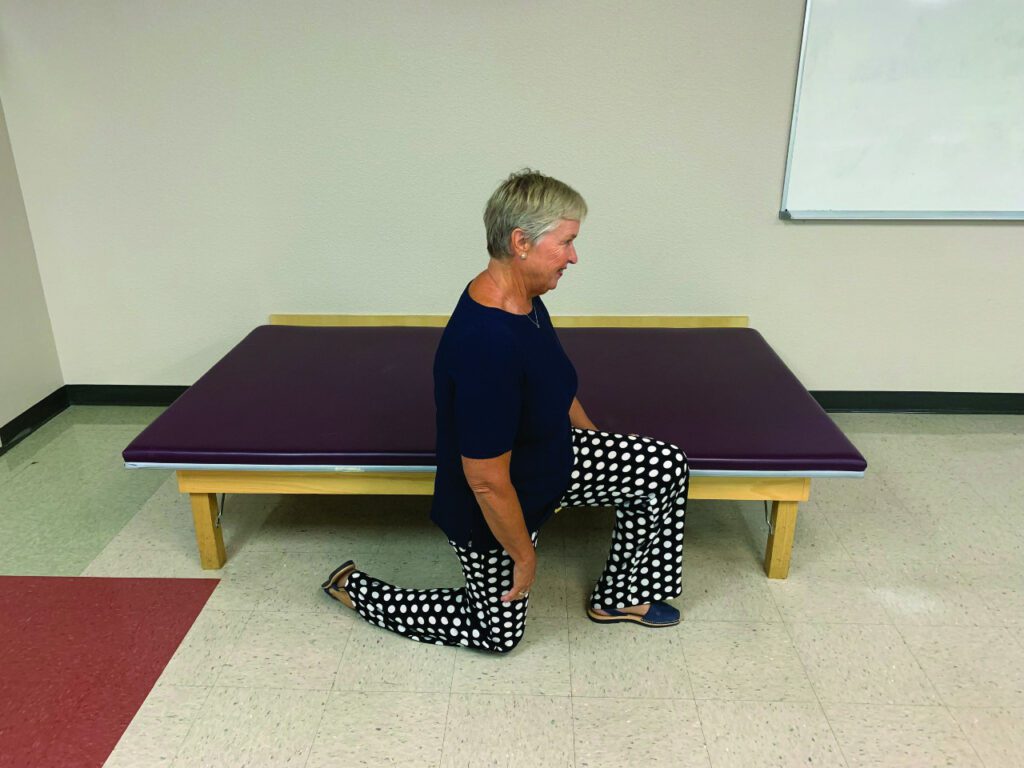
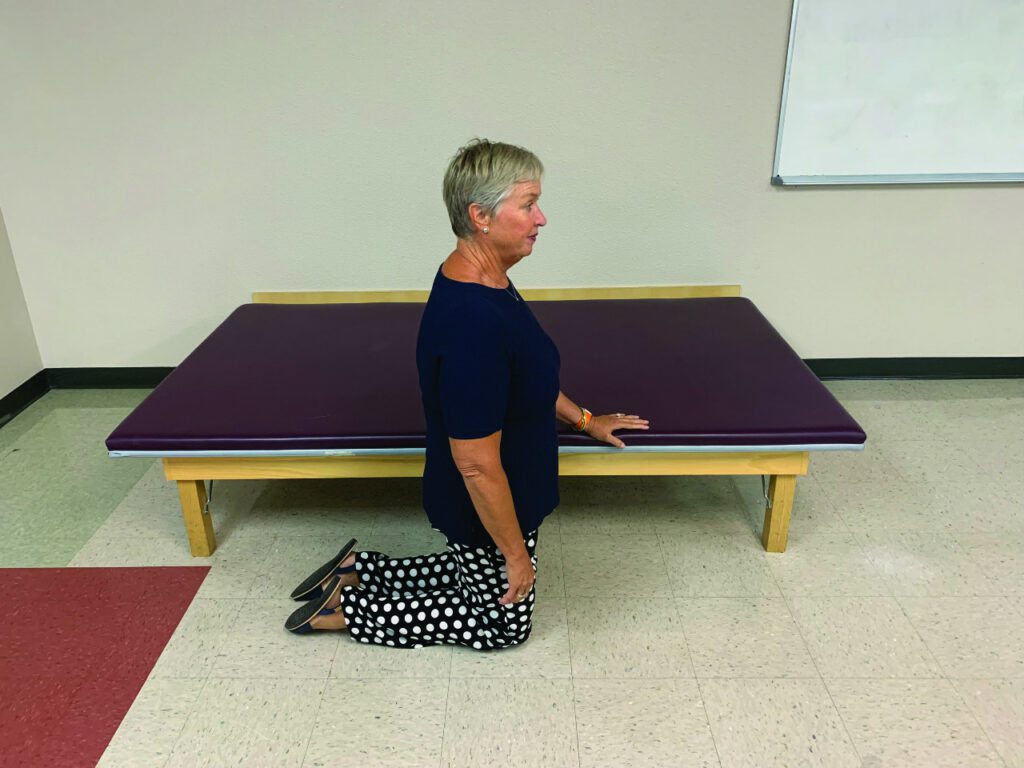
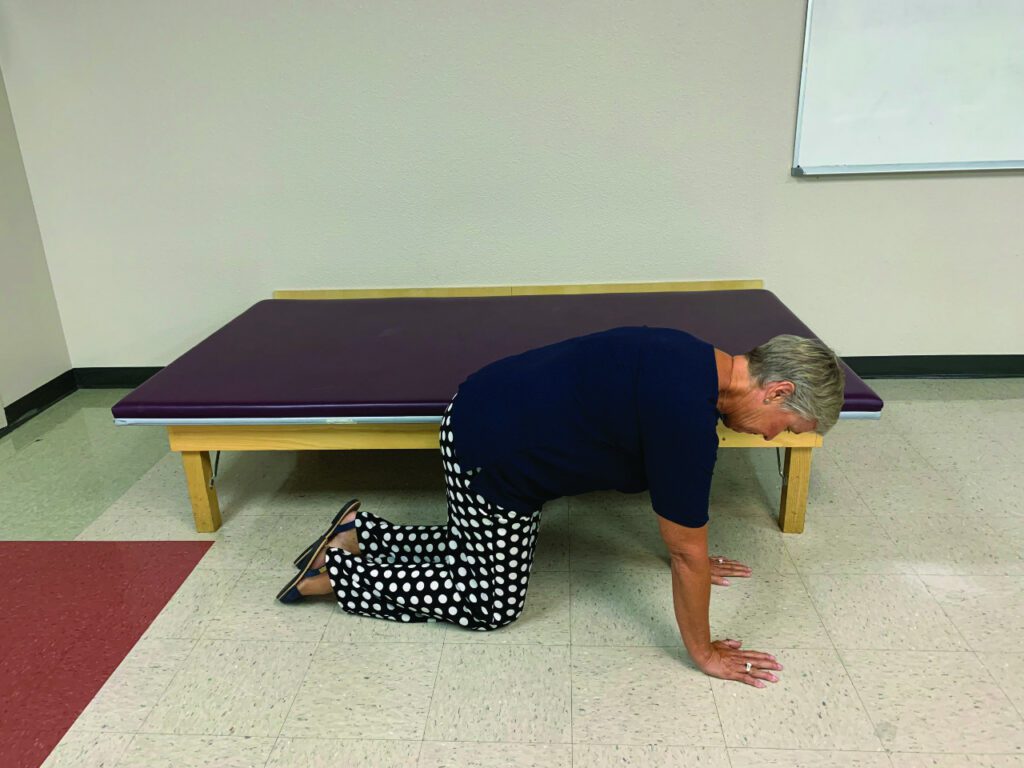
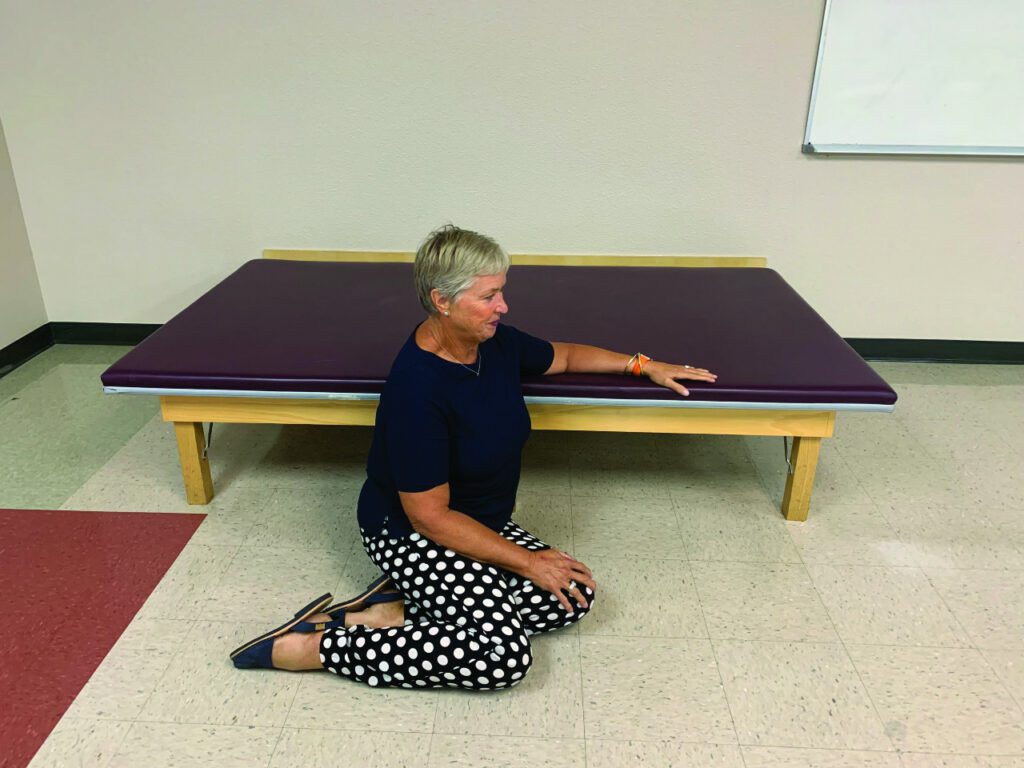
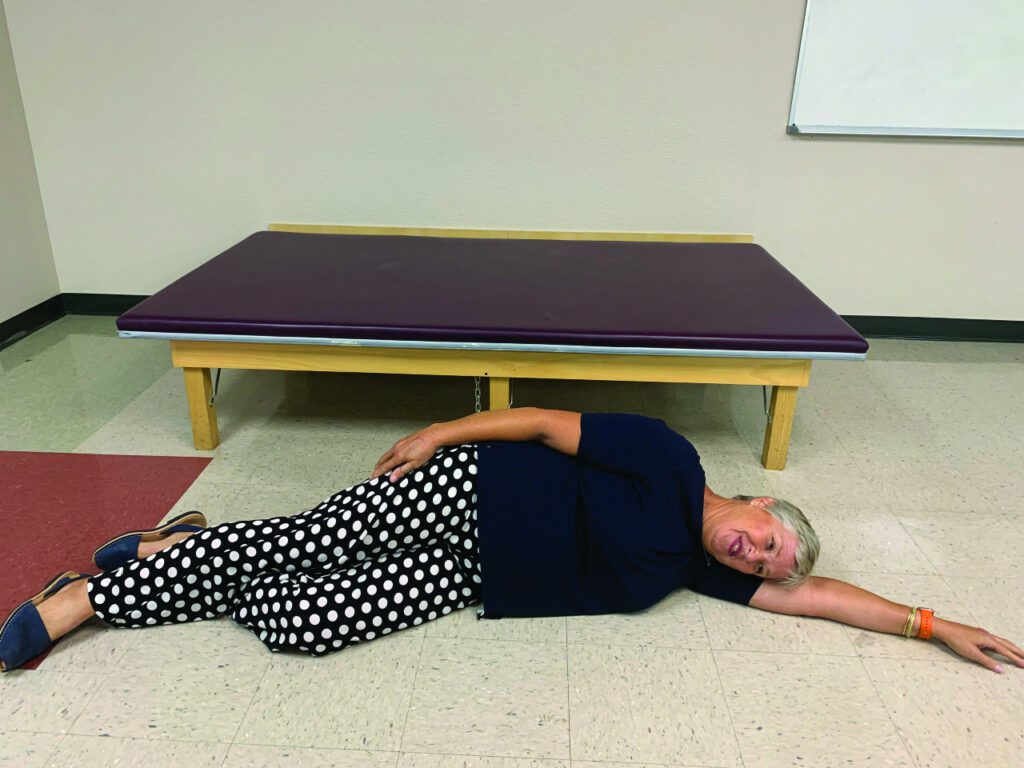
Floor-Rise Training Techniques
The process of rising from the floor to a safe position after a fall is an essential skill for individuals at risk for falls and is commonly referred to as floor-rise, floor-to-rise, floor-to-sit, or fall recovery training. Examples of floor-rise strategies include side-sit to half-knee pivot strategies, quadruped push-up strategies, and sit-up and roll-over strategies. Other examples of floor-rise strategies may involve the individual using a support to assist in rising, such as a sturdy chair or end table. While many clinicians are uncertain which floor rise strategy is best for teaching clients, evidence suggests that the optimal strategy is the backward chaining method.7
Backward Chaining
Therapists may be familiar with the conventional method of floor-rise training, which begins with the client lying on the floor and teaching them how to get up safely. While there are benefits to this method, it has been criticized for causing increased anxiety and fear, as clients begin in a vulnerable position and may not have the confidence that they can successfully rise from the floor.4
The backward chaining method, on the other hand, begins with the client in a standing position. Through backward chaining, the client learns how to rise from the floor in gradual steps, thus reducing stress and improving client confidence.7,8 This approach is more success-oriented than the conventional method and is the most commonly recommended procedure for rehabilitation practitioners.6,9
When implementing backward chaining, it is essential to break down the task into discrete steps. The last step in the floor-rise sequence is taught first (standing up from a seated position), and the client works their way backward to the first step (moving from supine to a side-lying position). When practicing later steps, the client should complete the current step and then the previous steps. The clinician should proceed to the next step only when the client can confidently complete all previous steps in the correct sequence. Modifications to each step may be necessary depending on the functional abilities of each client.
Benefits of Floor-Rise Training
Floor-rise training has benefits beyond just fall recovery. Teaching clients floor-rise strategies can help to improve strength, balance, coordination, functional mobility, and flexibility, and reduce the reoccurrence of falls.9-10 Practicing these strategies can serve as therapeutic exercise and is beneficial even if the client cannot rise entirely from the floor.6,11-12 Floor-rise training also has psychological benefits, such as improved confidence and reduced fear of falling.12 These psychological benefits can facilitate increased activity participation in a client’s therapy session and daily routine. Due to the high potential for backward chaining to reduce fear of falling, the American Geriatric Society has recommended this method for all clients who exhibit a significant fear of falling.9,13
Obstacles and Solutions
Each rehabilitation setting presents with various levels of care, opportunities for interdisciplinary collaboration, time allotted for intervention, available equipment, and environmental supports and hindrances. One common obstacle is time. Therapists may have limited time for interventions or may not prioritize teaching floor-rise strategies. However, therapists should recognize the additional benefits of floor-rise strategies that can help clients reach other rehabilitation goals. For example, the steps for getting up after a fall may also be utilized by an older adult wanting to garden from a kneeling position or scrub a stain on the carpet. Developing strength, coordination, and confidence through floor-rise training can increase safety and independence in multiple activities of daily living and functional mobility. Moreover, teaching fall recovery skills can help prevent future complications, and future rehabilitation stays.
Another concern is inadequate training, causing clinicians to be less confident in providing floor-rise interventions. We hope that this article will inspire clinicians to seek further training or collaborate with their rehabilitation teams to develop training to provide evidence-based floor-rise interventions safely. Even with adequate training, assisting a client to the floor as part of therapy can be daunting. Clinicians should always have a backup plan and ensure they have the equipment and means necessary to assist the client to a safe position if they cannot get up on their own. One option is to co-treat with another clinician. Having two clinicians allows for a safer transition to and from the floor using two-person handling techniques. Caregivers able to assist with two-person transfers can also be utilized.
One significant barrier for older adults learning floor-rise strategies is fear of falling and the subsequent avoidance of activities, including getting on the floor during therapy. Therapists should encourage activity participation by acknowledging the fear of falling, providing client education, and initiating graded exposure through backward chaining. Through skilled education and demonstrations, clients can understand the importance of practicing floor-rise techniques.
Older adults at risk for falling infrequently participate in activities that provide natural opportunities to practice getting up from the floor. Therapists can introduce and incorporate appropriately graded activities into therapy sessions, such as putting away items in low cabinets and doing laundry and light housecleaning. Adults with impaired cognition may have difficulty sequencing the necessary actions of rising from the floor. If this is the case, therapists can provide visual cues illustrating the steps, such as flashcards, handouts, or posters. Reviewing the correct sequence before physically practicing floor-rise strategies may be beneficial for these clients.
The Role of Technology in Floor-Rise Training
Utilizing rehabilitation technology, such as overhead bodyweight support systems, mechanical lifts, or manual lifts, can help clinicians and clients overcome obstacles to learning floor-rise strategies. Overhead bodyweight support systems can alleviate some of the client’s weight, allowing for an easier and safer transition through the backward chaining steps and to the floor to simulate a fall. Overhead bodyweight support systems can also help the client be less fearful as the harness can be worn throughout the intervention. Mechanical and manual lifts can be used to lower the client to the floor and can be used to get the client back onto a safe surface in emergencies.
Clinicians can also capitalize on technology that they likely already own, such as a smartphone, to record clients as they undergo floor-rise training. Clients can then watch these videos and receive visual feedback, which allows them to observe their body mechanics and review the sequences. Video feedback also provides an opportunity for clinicians to provide feedback in a low-stress situation. Clients can also review floor-rise training strategies outside of therapy sessions by accessing recorded videos.
Additional technology focusing on fall recovery is commercially available, such as medical alert devices, smartwatches, and lifting cushions. Due to the vast array of available devices, clients may have difficulty selecting and purchasing appropriate technology. Rehabilitation clinicians can play a role in helping clients identify beneficial technology and determine potential advantages, drawbacks, and limitations. Because devices may be out of reach after a fall, clinicians should take care to educate clients on the benefits of learning floor-rise skills rather than relying solely on technology.
Conclusion
Floor-rise training is a critical skill that can potentially save lives and improve rehabilitation outcomes for older adults. It improves quality of life, functional mobility, and safety for the aging population. Furthermore, floor-rise training can decrease fear of falling and enhance autonomy for individuals at risk of falls. Evidence-based approaches suggest that the backward chaining method is effective, efficient, and preferred by clinicians and clients. While there are multiple obstacles that both clinicians and clients may face regarding floor-rise training implementation, these strategies are valuable and vital for adults and older adults.
Rehabilitation clinicians should skillfully explain the value of these techniques to clients and document the benefits and impact on rehabilitation goals to stakeholders. Utilizing co-treatment when necessary, rehabilitation technology, and seeking advanced training can increase the safety and clinician and client confidence when delivering floor-rise training. Clinicians should strongly consider dedicating the time and resources needed to train clients and future clinicians to apply these strategies. RM
John V. Rider, MS, OTR/L, MSCS, CEAS, is an assistant professor at Touro University Nevada and a PhD candidate at the University of Nevada, Las Vegas, in the interdisciplinary health sciences program. He currently practices as a community-based occupational therapist for Good Life Therapy LLC in Southern Nevada.
Alyssa Sowerwine and Monica Tay are third-year occupational therapy doctoral students at Touro University Nevada completing their doctoral capstone projects. For more information, contact [email protected].
References
1. Burns E, Kakara R. Deaths from falls among persons aged ≥65 years - United States, 2007-2016. MMWR Morb Mortal Wkly Rep. 2018:67(18);509-514.
2. Alexander NB, Ulbrich J, Raheja A, Channer D. Rising from the floor in older adults. J Am Geriatr Soc. 1997:45(5);564-9.
3. Hofmeyer MR, Alexander NB, Nyquist LV, et al. Floor‐rise strategy training in older adults. J Am Geriatr Soc. 2002:50(10);1702-6.
4. Adams JMG, Tyson S. The effectiveness of physiotherapy to enable an elderly person to get up from the floor. Physiotherapy. 2000:86(4);185-9.
5. Cox TB, Williams K. Fall recovery intervention and its effect on fear of falling in older adults. Act Adapt Aging. 2016:40(2);93-106.
6. Kinn S, Galloway L. Do occupational therapists and physiotherapists teach elderly people how to rise after a fall? Br J Occup Ther. 2000:63(6);254-259.
7. Reece A, Simpson J. Preparing older people to cope after a fall. Physiotherapy. 1996:82;227–235.
8. Leonhardt R, Becker C, Grob M, Mikolaizal A. Impact of the backward chaining method on physical and psychological outcome measures in older adults at risk of falling: a systematic review. Aging Clin Exp Res. 2020:32(6);985-997.
9. Zak M. Physical rehabilitation regimens designed to assist the frail elderly in executing postural shifts safely and cop-ing effectively after incidental falls. Adv Rehab. 2006:2;11–17.
10. Barreto de Brito LB, Ricardo DR, Araújo DS, Ramos PS, Myers J, Araújo CG. Ability to sit and rise from the floor as a predictor of all-cause mortality. Eur J Prev Cardiol. 2020:21(7); 892-898.
11. Swancutt D, Hope S, Kent B, Robinson M, Goodwin V. Knowledge, skills and attitudes of older people and staff about getting up from the floor following a fall: a qualitative investigation. BMC Geriatrics. 2020:20(1);385.
12. Bohannon RW, Lusardi MM. Getting up from the floor. Determinants and techniques among healthy older adults. Physiother Theory Pract. 2004:20(4);233-241.
13. Rebekka L, Becker C, Groß M, Stefanie MA. Impact of the backward chaining method on physical and psychological outcome measures in older adults at risk of falling: A systematic review. Aging Clin Exp Res. 2020:32(6); 985-997.




